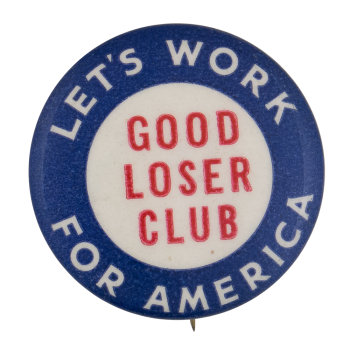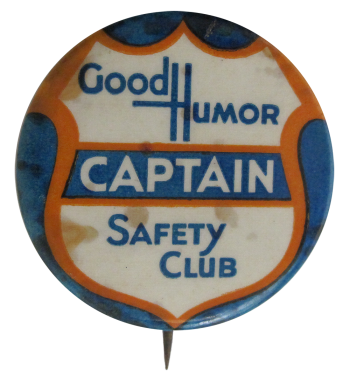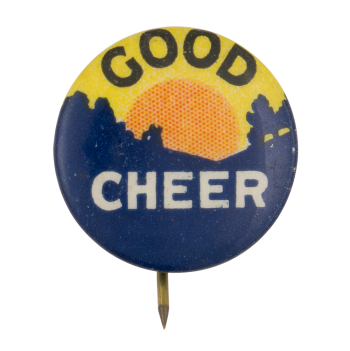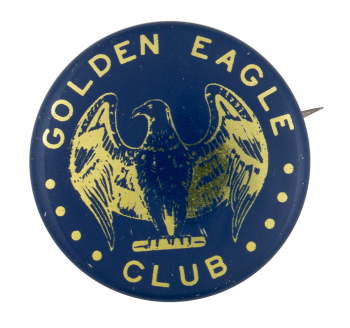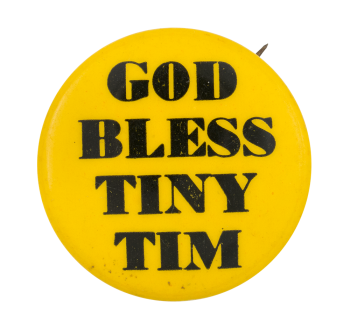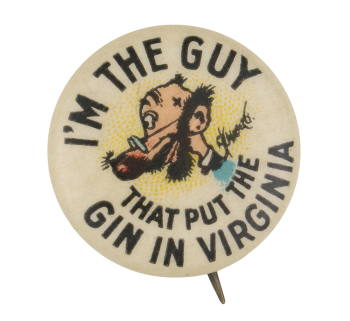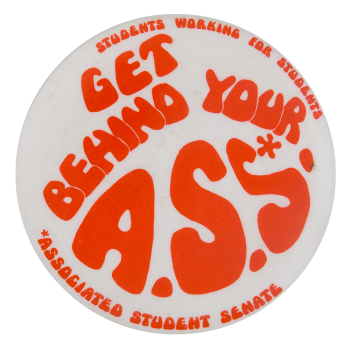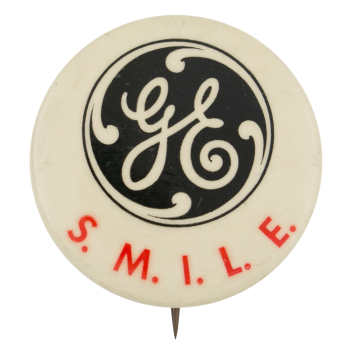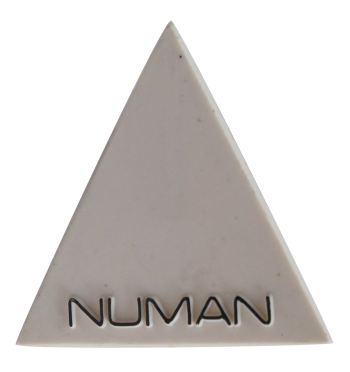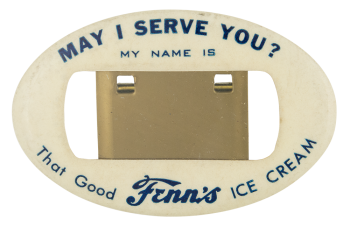Good Loser Club
| Category | |
|---|---|
| Additional Images | |
| Text on Button | LET'S WORK FOR AMERICA GOOD LOSER CLUB |
| Image Description | Outer edge is bordered in dark blue with white text and the inner circle is white with red text. |
| Curl Text | BASTIAN BROS CO. ROCHESTER union bug |
| Back Style | |
| The Shape | |
| The Size | |
| The Manufacturer | |
| Additional Information | This button refers to a group that was created by citizens during the 1940 election between Democrat Franklin Delano Roosevelt and Republican Wendell Wilkie. It was a club based in New York where half of the members supported Roosevelt and the other half supported Wilkie. It was formed with the intention of showing national unity by all of the members supporting whoever won the election regardless of who they had supported during it. The organization wished to show people they did not need to be divided over the candidates and to present a united front to the rest of the world. The club's slogan had been "Let's Work For America" which is depicted on the button |
| Catalog ID | CL0265 |

